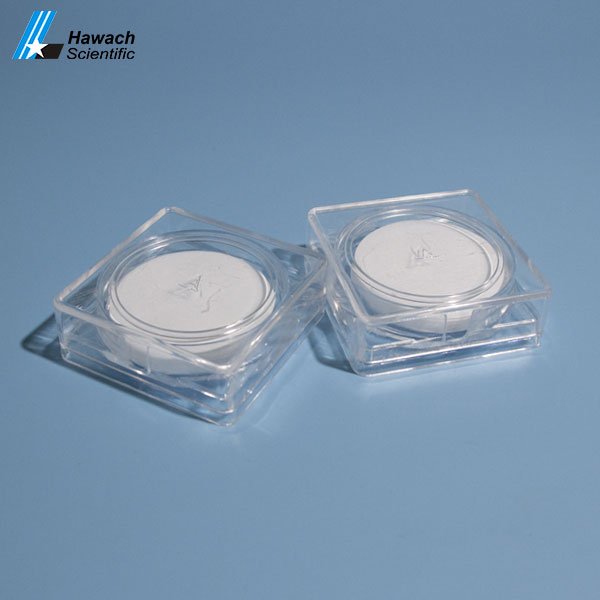[Hawach Scientific] Cellulose Nitrate Membrane Filter

| Cat# | Filter Material | Pore Size | Diameter | Package |
| 11211001 | Cellulose Nitrate | 0.22µm | 13mm | 400pcs/pk |
| 11211002 | 25mm | 200pcs/pk | ||
| 11211003 | 47mm | 100pcs/pk | ||
| 11211004 | 50mm | 100pcs/pk | ||
| 11211005 | 90mm | 100pcs/pk | ||
| 11211006 | 0.45µm | 13mm | 400pcs/pk | |
| 11211007 | 25mm | 200pcs/pk | ||
| 11211008 | 47mm | 100pcs/pk | ||
| 11211009 | 50mm | 100pcs/pk | ||
| 11211010 | 90mm | 100pcs/pk |
Cellulose nitrate(CN) membrane filter is also called nitrocellulose membrane filter, which is widely used in various laboratory applications for filtration and separation processes. It is made from cellulose nitrate, a compound derived from cellulose, which is a natural polymer found in plant cell walls. Cellulose nitrate membrane filters have a porous structure that allows the passage of fluids while retaining particles and microorganisms of specific sizes.
Advantages
- Pure material with high protein binding capacity and mechanical strength: The nitrocellulose membrane is made from 99.90% pure nitrocellulose material, ensuring the highest binding capacity;
- Convenient to use, simple to operate, and compatible with multiple detection methods: Compared with PVDF membranes, there is no need for a methanol soaking process, which makes it possible for protein transfer in hydrophilic environments. Before transfer, the membrane only needs to be wetted in water and then placed in the transfer buffer, without any other pre-wetting steps;
- Low background: In addition to high binding capacity, the nitrocellulose membrane itself produces a very low background, and the unique surface properties of the membrane ensure an excellent signal-to-noise ratio. Strict elution conditions are not required during membrane washing;
- The high retention rate for small molecular weight proteins: The nitrocellulose membrane has a variety of pore sizes to choose from. The 0.22µm nitrocellulose membrane can retain protein molecules with a molecular weight of less than 20kD through small pore sizes. The 0.45µm membrane is ideal for larger molecular weight proteins and nucleic acids, while the 0.1µm membrane is commonly used for proteins with a molecular weight less than 7kD.
Here are some key features and applications of cellulose nitrate membrane filters:
'Hawach Scientific' 카테고리의 다른 글
| [Hawach Scientific] 5 mL Centrifuge Tubes (0) | 2025.06.16 |
|---|---|
| [Hawach Scientific] Diol Flash Column (2) | 2025.06.12 |
| [Hawach Scientific] Qualitative Cellulose Filter Paper: BIO-6 (3) | 2024.09.27 |
| [Hawach Scientific] Amide HPLC Column (0) | 2024.09.19 |
| [Hawach Scientific] C18-Aqueous HPLC Columns (2) | 2024.09.09 |



